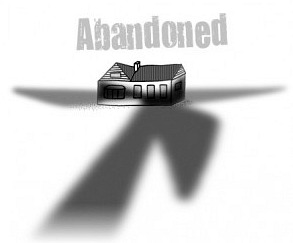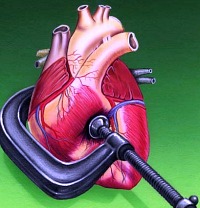Doctor pleads before the Australian Federal Senate
Mar 30, 2011
·
Editor’s note: The following is the text of Dr. Sarah Laurie’s oral testimony before the Australian Federal Senate, March 29, 2011.
·
Madam Chair and Fellow Senators:
I would like to thank you for giving me the opportunity to present to you in person.
I began this quest for knowledge when I was made aware of the proposed wind development near my home, almost a year ago, and was asked by my neighbour to comment on a study, by Dr Amanda Harry, a Cornish rural GP. It was only after reading this study that I really became concerned, and decided to look into the matter further, and find out what “patient” research had been done.
Sarah Laurie, MD
Medical Director, The Waubra Foundation
Prior to this I had been reassured by the official pronouncements from government health bodies that “there was no evidence of health problems.”
Like Dr David Iser, the Australian GP from Toora in Victoria, who investigated this a number of years ago, I did not want to find a problem. Locally, it has made things awkward for me with longstanding friends, former patients, and farming neighbours who have been through some very difficult years.
It has also made things very awkward with longstanding friends who are Greens, or who are passionate environmental advocates.
Dr Iser and I have both compared notes on our reluctance to accept that a technology in which we had invested so much hope for the future of the planet, could possibly be making people sick.
But it is. And we urgently need to find out why, in order to site turbines safely, so they will not seriously harm human health.
As I have listed in my submission, there are numerous doctors now, both in Australia and overseas, who have either conducted small studies on their patient populations, or conducted larger studies on patients who had developed the same health problems, since the wind developments had started operating near to their homes. We are all very concerned that these serious and mounting health problems are being ignored by our respective governments and health research institutions, previously held in high esteem.
I realized very early on that any research I did would be immediately seen by others to be tainted and, besides, some of that work had been done and had been ignored. Hence my acceptance of the position of Medical Director of the Waubra Foundation, and the objectives of the Foundation, particularly to collect field observations and use those to then ascertain what research is needed, and to then ensure that the best independent researchers in the particular scientific fields were encouraged to investigate the problems.
I have been privileged to get to know and now work closely with researchers around the globe who are trying to help identify and describe the problems, and to work out the scientific mechanisms for the damage being done to health. These include medical practitioners from a variety of disciplines, acousticians, physiologists, physicists, psychologists, and others. We are all united in our determination to find scientific answers to these questions.
We all have limited time and resources, and we need to ensure that any research which is done can be trusted by all parties, who are now very distrustful of each other. There is a lot at stake, for all parties. I am advised by Dr Bob Thorne, one of the independent acoustics researchers who has submitted a research proposal to the Foundation, that some very useful information and data could be gathered within 6 months.
If our original requests for funding had been granted 6 months ago, when asked, we could have had some results by now. There is no more time to lose.
There is absolutely no doubt that these turbines, particularly at some developments, are making nearby residents very sick, and that their symptoms worsen over time. This is resulting in people abandoning their homes and farms, if they can afford to. A recent example of this aired on South Australian ABC Stateline last Friday night. I was told by a local from Waterloo in South Australia yesterday that there are now five households who have left or are leaving Waterloo, primarily because they cannot sleep. That wind development seems to be particularly damaging to the local residents’ health. We need to find out why some developments seem to be worse than others.
We need to find out what the mechanism for their symptoms is. We have our strong hypotheses that one of the mechanisms is low frequency sound and infrasound, but these need to be formally tested, with concurrent measurement of infrasound, and other indices such as sleep and blood pressure, in the homes of the affected residents, while the turbines are turning. We then need to compare this to what happens when the turbines are not turning, which will require the cooperation of the industry. Alternatively, we can measure what happens to these residents when they are away from their homes, if such industry cooperation is not forthcoming.
Interestingly I have been made aware of a number of other sources of industrial low frequency noise which have reproduced exactly the same symptoms as many residents adjacent to wind turbines are reporting, including the elevated blood pressure, the severe sleep disturbance from waking up in a panicked state, and what appears to be the Tako Tsubo heart attack episodes. One of these is listed in submission number 389 from the Parkville Residents Association. There is an urgent need for more basic primary physiological research, particularly with respect to blood pressure.
The connection between chronic severe sleep deprivation, which is commonly reported in adjacent residents, and a multitude of illnesses, is well established in the medical literature. Most recently the meta analysis by Professor Cappuccio, from Warwick University, which I included as an attachment to my submission, clearly establishes that chronic sleep deprivation from whatever cause is directly implicated in significantly increased illness from heart attacks and strokes. This is in addition to the increased risk of accidents, suppressed immunity, mental health disorders, high blood pressure and diabetes. There is an urgent need for the sleep studies, across multiple sites, and on a number of occasions, as not every night is a problem, and this cannot be predicted in advance.
Similarly, the effect on blood pressure appears to be widespread and alarming. It needs to be properly measured, with the gold standard method of doing so, i.e. a 24 hour Holter Monitor. We have the subjects ready and waiting, we need the funding, and we need the best independent blood pressure researchers we can find to go and do the work.
These Tako Tsubo heart attacks I have mentioned, where people adjacent to turbine developments are having “heart attacks” but are then shown to have normal coronary arteries, also need to be properly documented and analysed.
The mechanism for Tako Tsubo heart attacks has already been identified as a surge in stress hormones, particularly adrenaline. This surge in adrenaline is also suspected with the episodes of acute hypertensive crises being described by residents adjacent to wind turbines, both in Australia and in Canada. It is also suspected because it has been shown in animal studies, and it fits with the clinical descriptions of people waking up in a panicked state, anxious and frightened. We suspect that the bodyʼs fight/flight mechanisms are being abnormally stimulated, and this is provoking the body to release substantial amounts of adrenaline, even while people are asleep. This needs to be properly investigated.
I should add that these episodes of sleep disturbance and nocturnal waking in a panicked state are being experienced by people living up to 10km away from existing wind developments in South Australia and New South Wales.
Mental health disorders are widespread, at times life threatening, with acute suicidal ideation, and need urgent description and analysis, but most importantly they need prevention, by siting turbines appropriately. This burden of illness will inevitably place more demands on already stretched rural mental health services.
The effect on children is unknown in terms of “peer reviewed evidence,” because, yet again, the proper studies have not yet been done. But the observations from parents and teachers are alarming, and need urgent and proper further investigation, free from politics and spin. Our childrenʼs long-term health and development is at stake, because of the particular risk to them from the chronic cumulative exposure, while their bodies and brains are developing.
These are just a few of the studies which in my view must be done, urgently, in order to protect rural residents’ health. We have a unique opportunity in Australia—the warning bells are loudly ringing, right now. We can learn from what has happened overseas, and we can learn from what has already happened in Australia. If we do not investigate these issues urgently and thoroughly, and instead proceed with the status quo, we are inevitably going to be making large numbers of rural residents very sick, and drive them out of their homes, and off their farms.
In closing, I want to quote from an interview which a prominent Australian scientist in the climate change debate, Tim Flannery, did with Phillip Adams on ABC Radio Nationalʼs Late Night Live. These comments are as relevant now as they were when he did the interview in 2005. It was recently replayed on 4th March, 2011.
PA: Before you leave the Lodge and move on to the White House . . . any other policy?
TF: I would make sure every piece of legislation I was putting in was put through a humanist sieve . . . microscope . . . to reflect . . . that every individual is a valuable person to be respected, regardless of who they are are, where they are, or where they are from.
First and foremost you’ve got to have that right, otherwise you won’t have a healthy society that will allow you to maintain democracy and all those other things you need to do. . . .
Make sure that all of your policy and all of your pronouncements are really focussed around that fundamental recognition that there is a group of Human Rights that we all possess, and that there is a level of respect we need to accord every individual regardless of where they’re from and regardless of whether we are fearful of them or whatever else, and we have to make sure that those things—they’re the underpinning of our society and are reflected in everything you do. . . .
I think if you lose that . . . if you start breaking down that fundamental respect, then you’ve lost something that really is your future.
That is exactly what I can see happening around me, across rural communities where turbines have been installed, and people are getting sick, through no fault or choice of their own.
My perspective, one year on from my previous ignorant position, is that current wind industry practices and government reports, decisions, and actions (at all levels of government in Australia) have directly resulted in fundamental abuses of Human Rights occurring, because the health concerns of rural residents have been ignored—until this Senate Committee.
This underpins much of the rural backlash globally against wind turbines.
Ultimately, I believe the wind industry has an important role to play in the sustainable energy mix for the future, if and only if it is safely sited. By ignoring and denying the current problems, I believe it is doing itself a serious disservice, and it risks damaging the brand irreparably.
Individual decision makers in each of the institutions previously mentioned are directly responsible for this situation, and now need to share in the solution—to clean up the carnage they have been responsible for, and help some of the shattered lives and rural communities rebuild.
In closing, I ask the Committee to convey the urgent need for immediate funding for independent research to the Australian Federal Parliament, and to recommend an immediate halt in any further approvals and construction of wind turbines closer than 10km to housing, until the results of such independent studies are available.
When the results of such independent studies are available, there needs to be an appropriate consultative and fair solution developed to solve the problems which have been caused by the currently constructed but unsafely sited turbine developments which are making people sick.
Australia could lead the world in the safe implementation of this technology, rather than blindly follow the mistakes that have already been made, both here and elsewhere.













Comment by Carol Leonard (Ontario, Canada, and Sydney, Australia) on 03/30/2011 at 6:06 pm
This introduction to the Australian Senate is a powerful statement of medical urgency. It has been my experience that Australia, lagging behind in industrial over-development, often finishes first for people. May this be the case now!
I have read Dr Laurie’s “Report to Clinicians,” forwarded to me by my Sydney neurologist after my team of doctors has found no significant cause for my recent health events, possibly because I live near 86 IWTs (Industrial Wind Turbines) in Canada part of the year. Funding for this medical research is not only essential; it is imperative!
I laud Dr Laurie and her colleagues for their work in this pioneering medicine, but they must be government-funded if results are to be timely.
Carol Leonard
Comment by Andreas Marciniak (Waterloo, South Australia) on 04/08/2011 at 3:18 am
I agree with you Carol, and I would like to thank Dr, Sarah Laurie and Dr, Nina Pierpont,and all there colleagues for all they have done to bring the Wind Turbine Syndrome to the light of day.
THANK YOU
Andreas Marciniak
Comment by Itasca Small on 08/30/2011 at 8:29 pm
Great testimony.
How about, the developers be required to fund the studies they should have had to conduct along!!!?